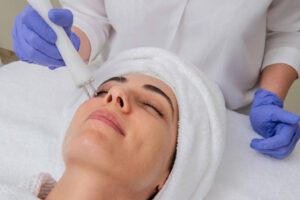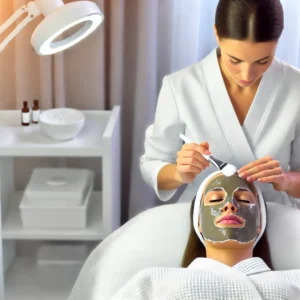Zirconia crowns and bridges are popular dental restorations made from zirconium dioxide, a strong, biocompatible ceramic material known for its durability and natural appearance. Zirconia is often used as a preferred material for crowns and bridges because it provides both strength and aesthetics, making it an ideal choice for restoring damaged, decayed, or missing teeth. Zirconia crowns and bridges are especially popular for restoring teeth in both the front and back of the mouth due to their combination of strength, durability, and lifelike appearance.
What are Zirconia Crowns and Bridges?
- Zirconia Crowns: A crown is a cap that covers a damaged or weakened tooth to restore its shape, size, strength, and function. Zirconia crowns are made from zirconium dioxide, a durable and natural-looking ceramic. They are used to restore teeth that are decayed, cracked, or weakened and can be used for both front and back teeth.
- Zirconia Bridges: A bridge is a dental restoration that replaces one or more missing teeth by anchoring onto adjacent healthy teeth. Zirconia bridges consist of two crowns placed over the anchoring teeth (abutments) and an artificial tooth (pontic) that fills the gap left by the missing tooth.
Types of Zirconia Crowns
- Monolithic Zirconia Crowns: These are crowns made entirely from zirconia, known for their exceptional strength and resistance to fracture. They are typically used for posterior (back) teeth due to their durability.
- Layered Zirconia Crowns: These crowns have a zirconia core covered with a layer of porcelain, which provides a more natural and aesthetic appearance. They are commonly used for anterior (front) teeth to achieve a lifelike look.
Advantages of Zirconia Crowns and Bridges
- Strength and Durability: Zirconia is one of the strongest materials used in dentistry, making zirconia crowns and bridges ideal for withstanding the biting forces of chewing and grinding. They are less likely to chip or fracture compared to other ceramic materials.
- Aesthetics: Zirconia crowns and bridges are tooth-colored and can be matched to the natural color of your teeth, providing a seamless and aesthetically pleasing restoration. They have a translucent quality that mimics natural tooth enamel.
- Biocompatibility: Zirconia is biocompatible, meaning it is not likely to cause allergic reactions or irritation to the gums. This makes it a safe option for patients who may have metal sensitivities.
- Minimal Tooth Reduction: Zirconia crowns require less removal of tooth structure compared to traditional metal-based crowns, preserving more of the natural tooth.
- Longevity: Due to their strength and resistance to wear, zirconia crowns and bridges are known for their long lifespan, providing patients with a durable solution for restoring damaged or missing teeth.
Uses of Zirconia Crowns and Bridges
- Restoring Damaged or Decayed Teeth: Zirconia crowns are used to cover and protect teeth that have been weakened by decay or damage. They restore the tooth’s shape, function, and appearance.
- Covering Dental Implants: Zirconia crowns are often used to cover dental implants, providing a natural-looking tooth replacement that matches the rest of the teeth.
- Replacing Missing Teeth: Zirconia bridges are used to replace one or more missing teeth, restoring both the appearance and function of the smile.
- Protecting Root-Canal Treated Teeth: Teeth that have undergone root canal treatment are often fragile and require a crown to protect them. Zirconia crowns are a durable option for such cases.
Procedure for Getting Zirconia Crowns and Bridges
- Initial Consultation: The dentist will examine your teeth and gums to determine if zirconia crowns or bridges are the best solution for your needs. X-rays or digital scans may be taken to assess the condition of the teeth.
- Tooth Preparation:
- For crowns, the tooth is reshaped to make room for the zirconia crown. Any decayed or damaged parts of the tooth are removed.
- For bridges, the adjacent teeth (abutments) are prepared to receive crowns, which will support the artificial tooth or teeth that fill the gap.
- Impressions: Once the teeth are prepared, impressions are taken to create a model of your mouth. These impressions are sent to a dental lab where the custom zirconia crowns or bridges are fabricated. In some modern dental offices, digital impressions and CAD/CAM technology are used to create zirconia restorations in-office, reducing waiting times.
- Temporary Crown or Bridge: A temporary crown or bridge may be placed to protect the prepared teeth while the permanent zirconia restoration is being made.
- Fitting and Placement:
- Once the zirconia crown or bridge is ready, the dentist will check the fit, color, and appearance.
- If everything is satisfactory, the zirconia crown or bridge is cemented in place using dental adhesive. The dentist will make adjustments to ensure a comfortable bite.
Caring for Zirconia Crowns and Bridges
- Oral Hygiene: Maintain good oral hygiene by brushing twice a day and flossing daily. Pay special attention to the gum line around the crown or bridge to prevent plaque buildup.
- Regular Dental Visits: Visit your dentist regularly for cleanings and check-ups to ensure the health of your natural teeth and the integrity of the zirconia restorations.
- Avoid Hard Foods: While zirconia is durable, it’s best to avoid biting down on very hard foods or objects (e.g., ice or pen caps), which could damage the crown or bridge.
- Use a Mouth Guard if Grinding Teeth: If you grind or clench your teeth at night, wear a night guard to protect your zirconia crowns and natural teeth.
Differences Between Zirconia Crowns and Other Types of Crowns
- Porcelain-Fused-to-Metal (PFM) Crowns:
- Aesthetics: PFM crowns have a metal base covered with porcelain, which can appear less natural compared to zirconia. Over time, the metal margin can become visible, especially if gum recession occurs.
- Durability: PFM crowns are durable, but the porcelain can chip or break off. Zirconia crowns, in contrast, are more resistant to chipping due to their strength.
- All-Porcelain Crowns:
- Aesthetics: All-porcelain crowns offer excellent aesthetics and are often used for front teeth. However, they are more fragile compared to zirconia crowns and may not be ideal for back teeth that endure higher biting forces.
- Durability: Zirconia crowns are stronger and better suited for withstanding the pressure of chewing and grinding compared to all-porcelain crowns.
- Metal Crowns:
- Aesthetics: Metal crowns are very durable but are not tooth-colored, making them less suitable for visible teeth.
- Strength: Metal crowns are known for their strength, but zirconia crowns provide similar durability while offering a more natural appearance.
Advantages of Zirconia Bridges Over Traditional Bridges
- Aesthetics: Zirconia bridges blend seamlessly with the surrounding natural teeth due to their tooth-like color and translucency.
- Strength: Zirconia is incredibly strong, making it suitable for replacing missing teeth in areas of the mouth that endure significant chewing forces.
- Biocompatibility: Unlike metal bridges, zirconia does not cause allergic reactions or gum irritation, making it ideal for patients with metal sensitivities.
Other Services
- Esthiderm facial with Baby Botox Mesotherapy
- Radio frequency for lifting and infusing collagen
- Esthiderm facial with lifting mask
- Hair Scalp HydraFacial
- Root Strengthening and Hair Growth Treatment
- Hair Loss Treatment
- Meso Therapy
- Meso Botox
- Chemical Peeling
- Aqua Gold
- PRP
- Dark Circles
- Pigmentations
- Instant Glow Vitamins
- Open Pores
- Acne Scars
- Intensive Hyaluronic Treatment
- Intensive Vitamin C Treatment
- Black & White heads removal (Manual extraction)
- Hydrafacial (With Microdermabrasion)
- OxyGeneo Treatment
- HYDRAFACIAL WITH DETOX
- HYDRAFACIAL WITH VITAMINS
- DEEP HYDRAFACIAL
- Male laser Hair Removal
- Female hair removal laser
- INVISALIGN
- FLOURIDE APPLICATION
- NIGHT GUARD
- SIMPLE EXTRACTIO
- SURGICAL EXTRACTION
- ROOT CANAL TREATMENT (RCT)
- VENEERS PER TOOTH
- FILLINGS
- SNAP ON SMILE (UPPER/LOWER)
- Home kit whitening
- Retreatment
- NANO TEETH WHITENING
- SCALING AND POLISHING



